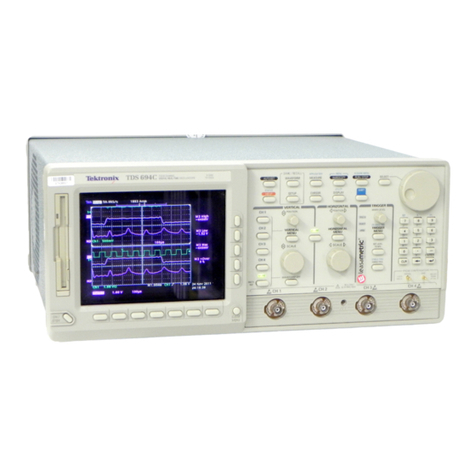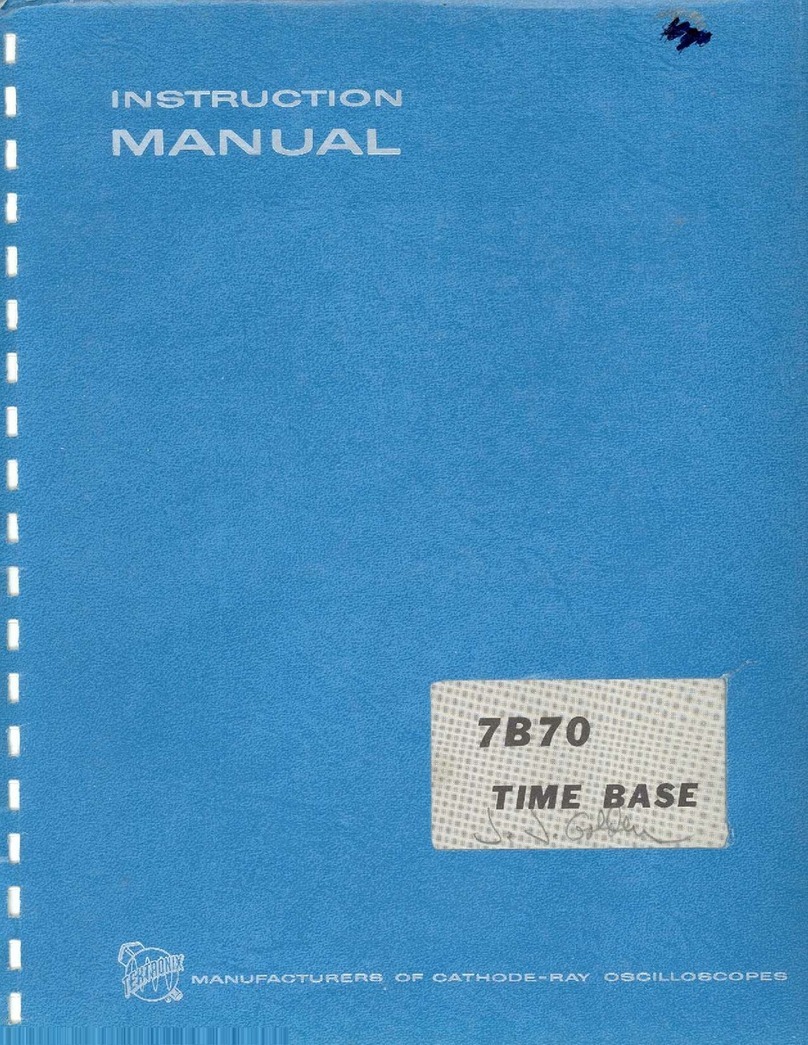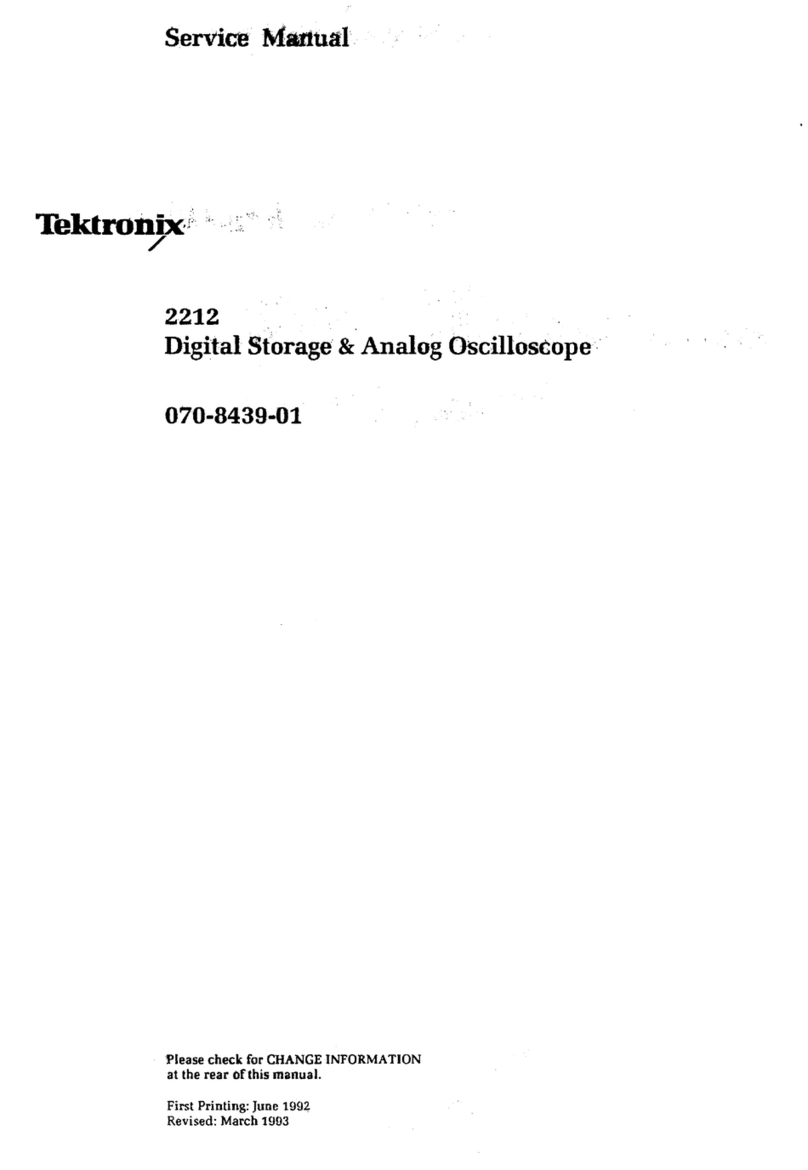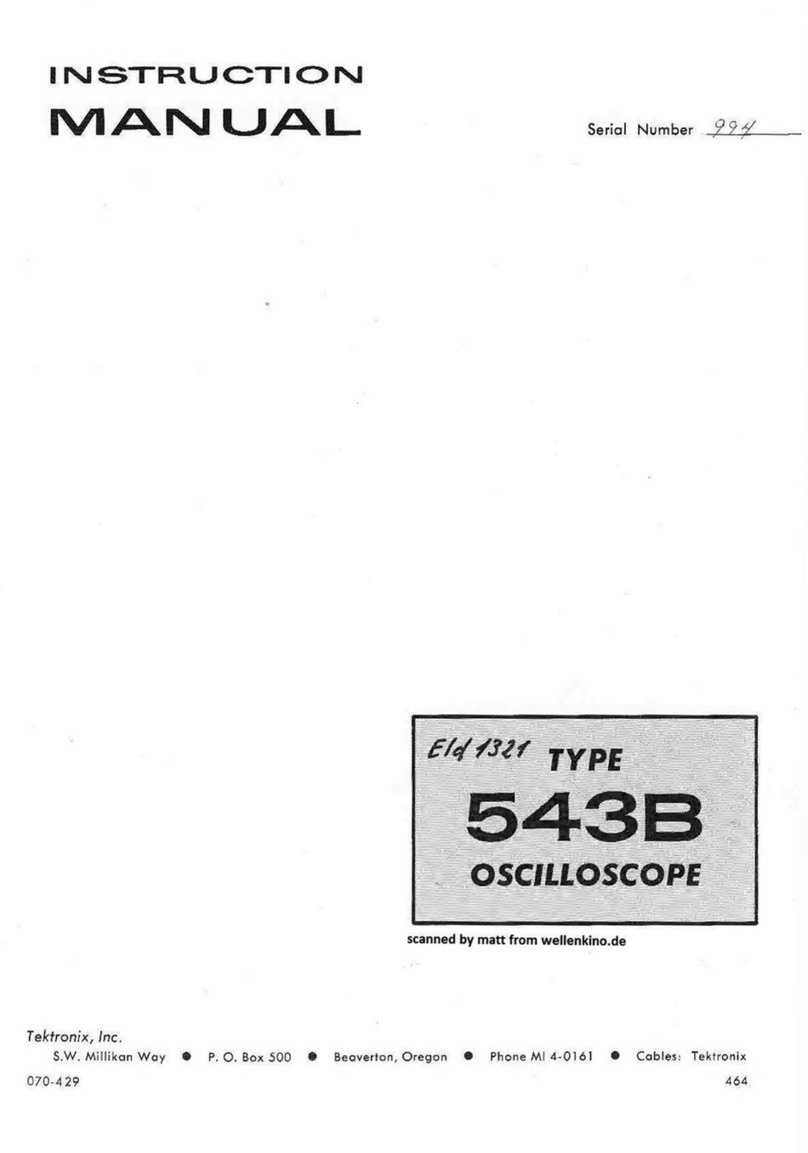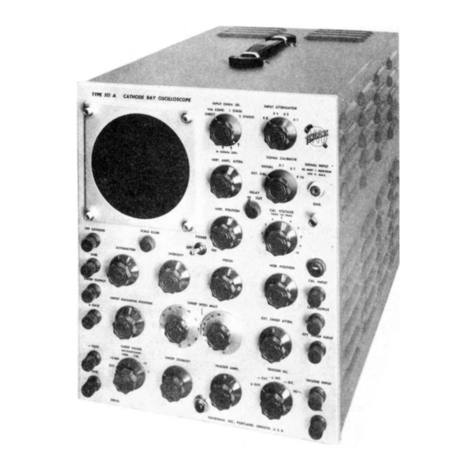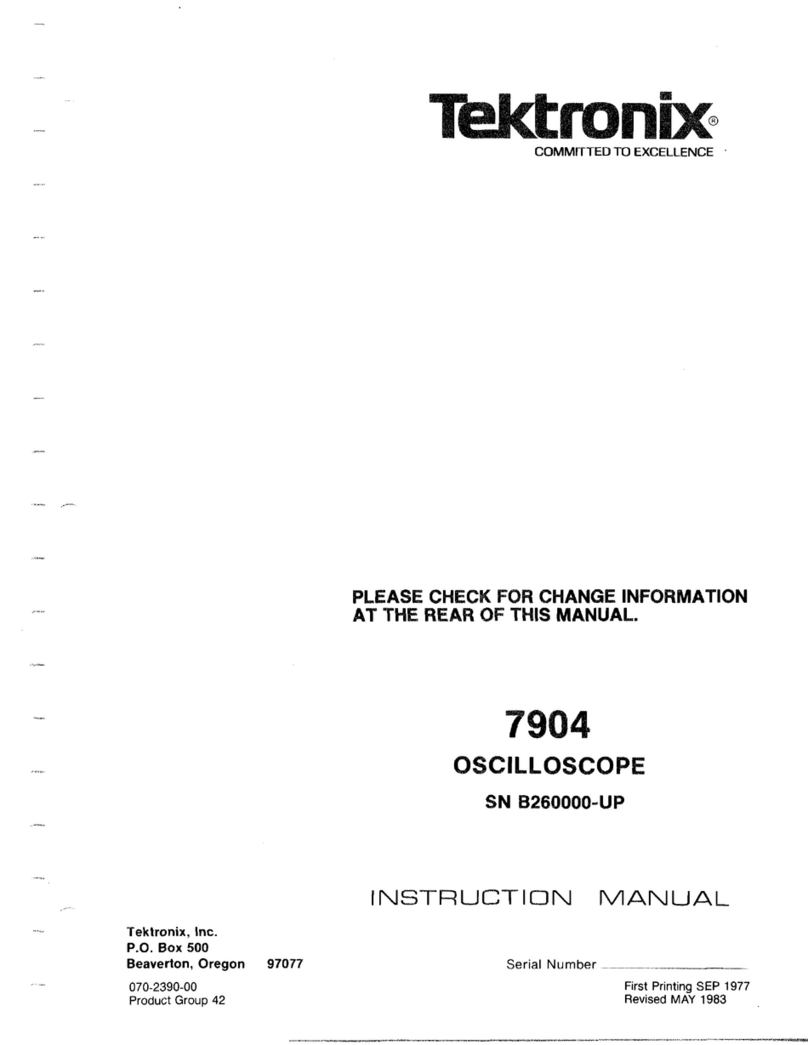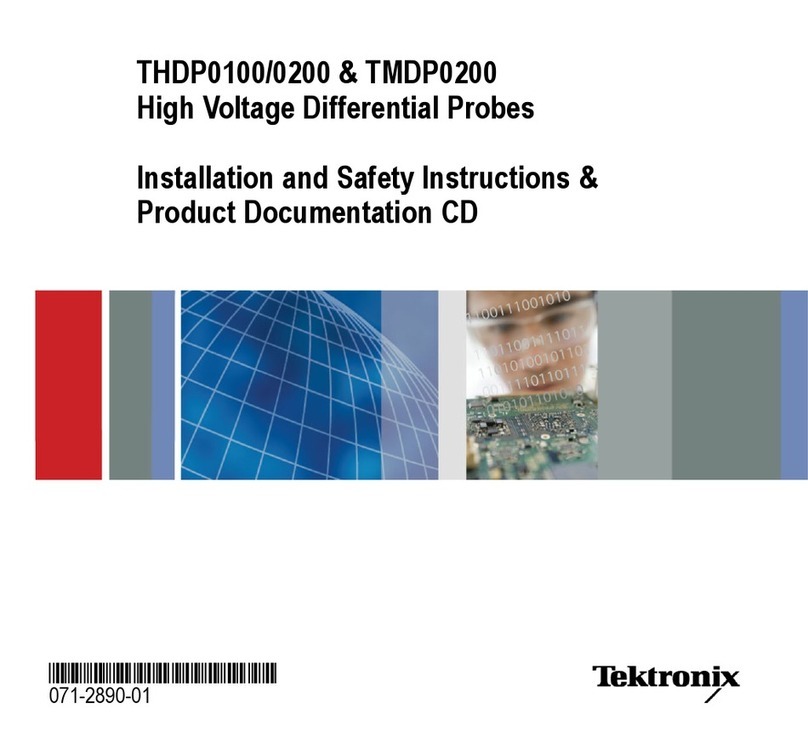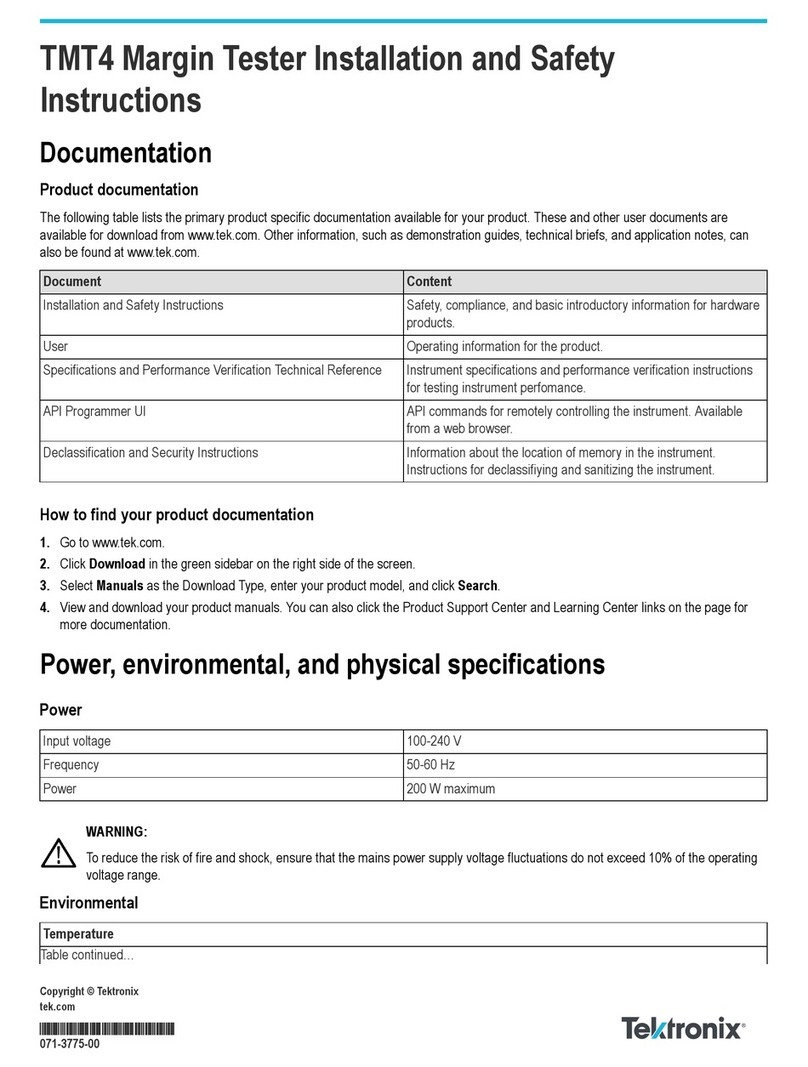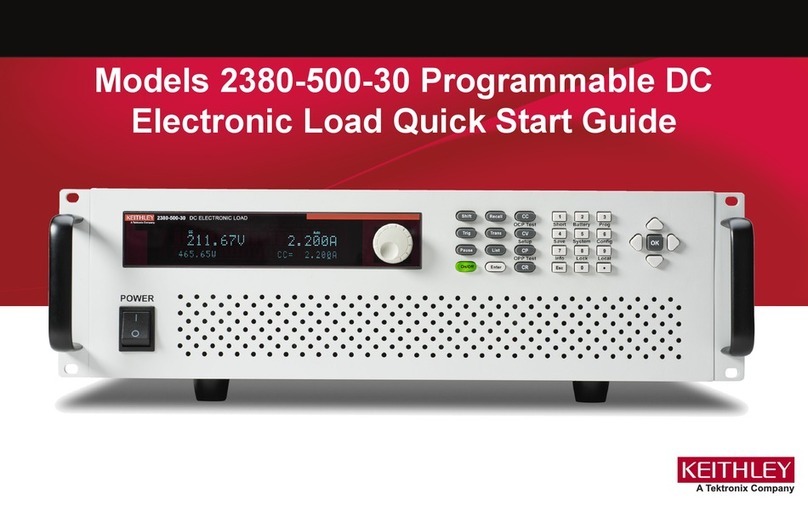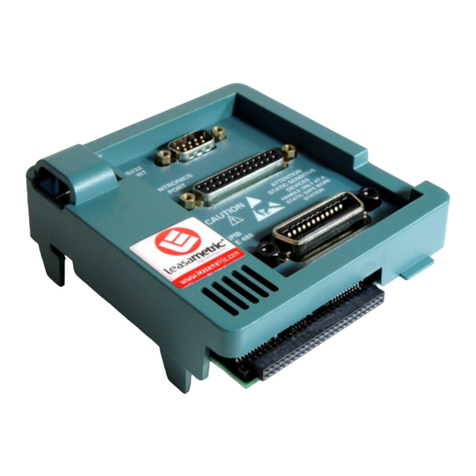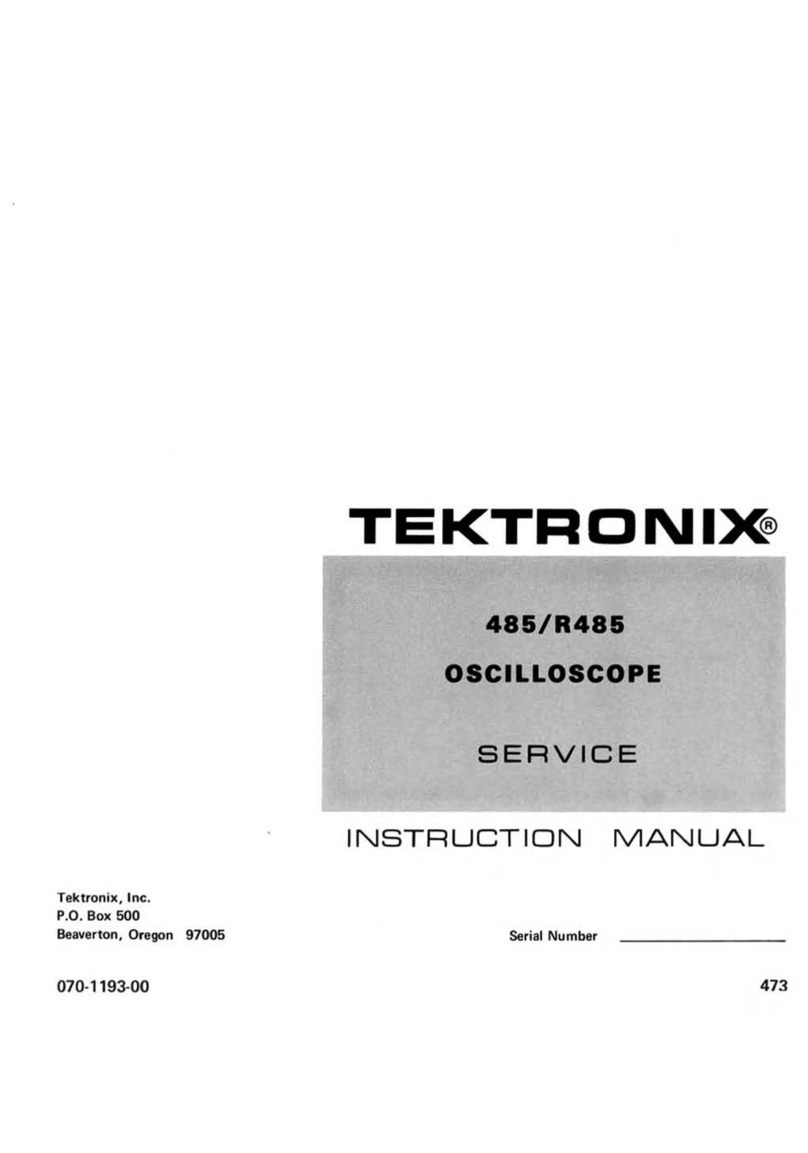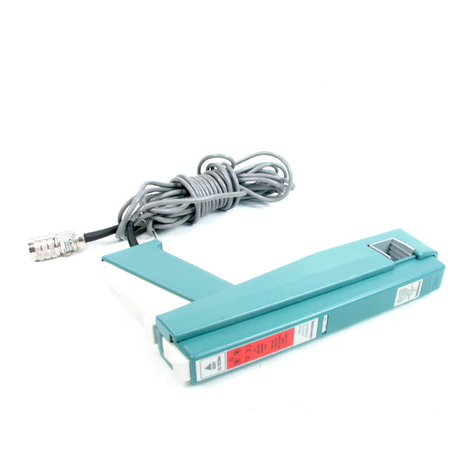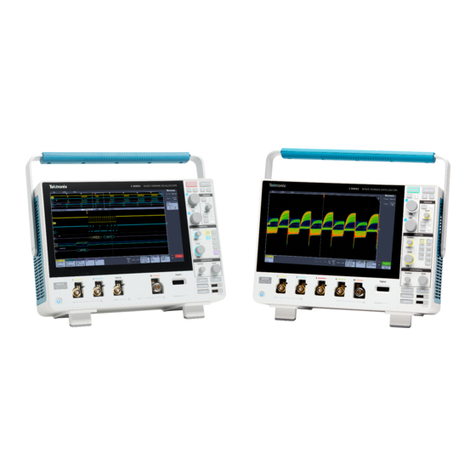
SECTION
II
OPERATING
INSTRUCTIONS
The
Type
511
-A
may
be
operated
in
any
normal
in
door
location,
or
in
the
open
if
protected
from
moisture.
If
the
instrument
has
been
exposed
to
dampness,
it
should
be
left
in
a
warm
room
until
thoroughly
dry,
be
fore
being
placed
in
operation.
To
prevent
excessive
interior
temperatures,
it
is
im
portant
to
allow
adequate
ventilation
for
the
oscillo
scope.
Several
inches
clearance
should
be
provided
at
the
sides,
back
and
top
of
the
case.
If
the
Type
511
-A
is
used
continuously
for
the
same
application,
and
only
one
setting
of
the
controls
is
re
quired,
it
is
advisable
to
periodically
check
the
instru
ment
at
all
control
settings
to
be
sure
it
is
in
normal
operating
condition.
For
example,
if
only
direct
connec
tion
to
the
vertical
deflection
plates
of
the
CRT
is
used,
a
defect
in
the
vertical
amplifier
might
not
become
evi
dent.
Operation
of
the
controls
also
helps
to
prevent
accumulation
of
dirt
and
tarnish
on
their
contacts.
Although
the
components
are
well
supported
and
the
adjustments
very
stable
in
setting
to
allow
for
portable
operation,
the
Type
511
-A
should
not
be
subjected
to
excessive
vibration
or
rough
handling.
To
place
the
Type
511
-A
in
operation
for
the
first
time
the
following
procedure
is
suggested.
1.
2.
Connect
to
a
source
of
50-60
cycle,
105-125
V
power.
Set
controls
as
indicated
below.
INPUT
CHAN.
SEL...
INPUT
ATTENUATOR
VERT.
AMPL.
ATTEN.
SIGNAL-CALIBRATE.
VERT.
POSITION
........
CAL
VOLTAGE
........
ASTIGMATISM
..........
INTENSITY
................
FOCUS
..........................
HOR.
POSITION
........
SWEEP
MAGNIFIER
POSITION
SWEEP
SPEED
MULT.
SWEEP
RANGE...
SWEEP
STABILITY
TRIGGER
AMPL...
TRIGGER
SEL
.......
..............
1
STAGE
..........................
X
1
............
Clockwise
.........................
3
V
....
Index
vertical
............................
0
..
.
Index
vertical
Counterclockwise
..
.
Index
vertical
.............
Clockwise
OUT
5.0
10,000
Counterclockwise
Counterclockwise
...................
+INT.
Turn
POWER
switch
to
ON
and
wait
about
30
3.
seconds.
4.
Advance
INTENSITY
control
until
a
spot
is
seen.
5.
Adjust
VERT.
POSITION,
HOR.
POSITION,
ASTIG
MATISM
and
FOCUS
until
a
sharply
focussed
spot
is
obtained
at
the
left
center
of
the
screen.
CAUTION
—
DO
NOT
ALLOW
THIS
SPOT
TO
BE
EXCESSIVELY
BRIGHT
OR
RE
MAIN
FOR
LONG
IN
ONE
POSITION.
6.
Advance
the
SWEEP
STABILITY
control
until
a
sweep
appears,
then
turn
it
back
just
under
this
point.
7.
Set
the
CAL.
VOLTAGE
control
to
30.
A
vertical
line
about
1.25
cm
high
should
appear.
8.
Advance
the
TRIGGER
AMPL.
control
until
a
stable
image
of
a
clipped
sine
wave
appears.
The
oscilloscope
is
now
observing
the
50-60
cycle
power
line
waveshape
clipped
by
the
calibrator
cir
cuits.
To
observe
other
waveshapes
connect
them
to
the
SIG
NAL
INPUT
binding
post,
turn
the
SIGNAL
CALIBRATE
switch
to
SIGNAL,
select
the
appropriate
sweep
speed,
etc.
SWEEP
CIRCUIT
ADJUSTMENTS
The
sweep
circuit
of
the
Type
511
A
is
different
from
the
gas
tube
type
usually
employed
in
portable
oscillo
scopes.
It
is
much
more
flexible
and
capable
of
syn
chronizing
with
much
higher
frequencies
than
conven
tional
sweep
circuits.
Fundamental
frequencies
of
10
m
c
and
higher
can
be
easily
observed.
By
one
simple
adjustment
the
sweep
will
run
recurrently
or
triggered
as
desired.
In
a
recurrent
or
sawtooth
sweep
as
generated
by
a
gas
tube
or
similar
device
the
synchronization
takes
place
at
the
end
of
the
sweep.
The
sync
impulse
causes
the
beam
to
return
to
the
left
side
of
the
tube
where
it
immediately
starts
another
sweep.
Thus
the
sweep
time
must
be
a
multiple
of
the
signal
period,
or
expressed
another
way,
the
sweep
frequency
an
integral
fraction
of
the
signal
frequency.
In
a
triggered
sweep
circuit
each
sweep
is
started
in
dependently
of
the
preceeding
sweep
by
a
trigger
or
synchronizing
impulse.
When
no
trigger
is
being
re
ceived,
the
beam
remains
at
the
left
side
of
the
trace.
When
the
trigger
arrives,
the
beam
goes
linearity
to
the
right
for
a
time
in
this
case
determined
by
the
multi
vibrator
pulse
length.
At
the
end
of
its
sweep
it
returns
to
the
left
side
again
to
await
another
trigger.
It
is
this
variable
waiting
period
which
makes
the
synchroniza
tion
so
easy
since
the
sweep
time
is
now
independent
of
the
signal
period.
The
triggered
sweep
makes
it
pos
sible
to
view
pulses
such
as
used
in
radar
and
tele
vision
where
the
length
of
the
pulse
is
very
short
com
pared
to
the
space
between
pulses.
This
requires
a
fast
sweep
with
a
long
waiting
period.
Waiting
periods
of
2000
times
the
sweep
length
are
frequently
used.
Adjustment
of
Sweep
Stability
The
SWEEP
STABILITY
control
varies
the
multivibra
tor
bias
and
therefore
detemines
whether
the
sweep
will
oscillate
recurrently
or
wait
for
a
trigger
impulse.
Correct
functioning
for
triggered
operation
is
therefore
obtained
when
it
is
set
just
under
the
point
where
oscil
lation
takes
place.
The
procedure
is
to
remove
the
trigger
source,
turn
the
TRIGGER
AMPL.
control
counter
clockwise,
and
advance
the
SWEEP
STABILITY
knob
until
a
sweep
appears
and
then
decrease
it
until
it
just
disappears.
SECTION
2,
PAGE
1
TYPE
511-A,
511-AD
